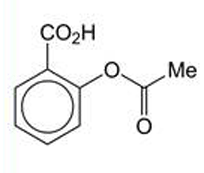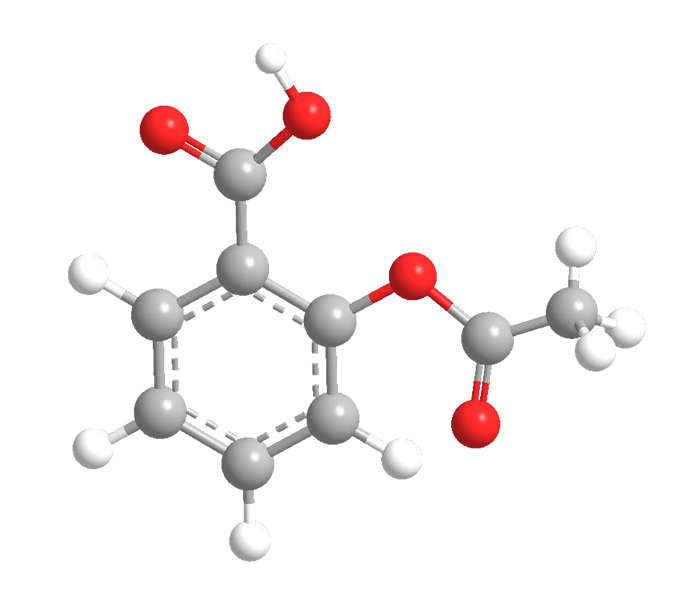

Aspirin, or more formally, acetylsalicylic acid, was first identified and prepared by C. F. Gerhardt in 1853. By 1899, Bayer was manufacturing it and selling it worldwide. It was the leading over-the-counter pain remedy until the 1950s, when acetaminophen and then ibuprofen began to take away much of its market. In the 1980s, the discovery that aspirin is an anticlotting agent strengthened its sales because many people take it to lower the chance of heart attack or stroke.
MOTW update:
May 9, 2022
Aspirin1 was the Molecule of the Week for June 4, 2012. It is a venerable pain remedy and anticlotting agent that for decades has been recommended by physicians in low doses (81 mg) as a prophylactic against the risk of heart attack and stroke.
But recently, the independent US Preventive Services Task Force (USPSTF) reversed this recommendation for patients older than 60 years who have no history of heart attack or stroke. The USPTF stated that these patients receive no benefit from aspirin but may be at risk of internal bleeding from the compound. Some physicians, like Abbas Bitar at the University of Michigan, say that higher-risk patients should still consider a regimen of low-dose aspirin.
1. CAS Reg. No. 50-78-2.

Learn more about this molecule from CAS, the most authoritative and comprehensive source for chemical information.
Molecule of the Week needs your suggestions!
If your favorite molecule is not in our archive, please send us a message. The molecule can be notable for its current or historical importance or for any quirky reason. Thank you!
Stay Ahead of the Chemistry Curve
Learn how ACS can help you stay ahead in the world of chemistry.

